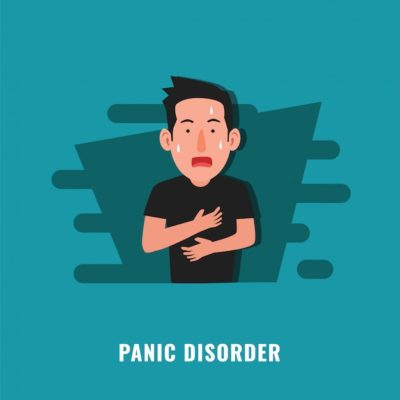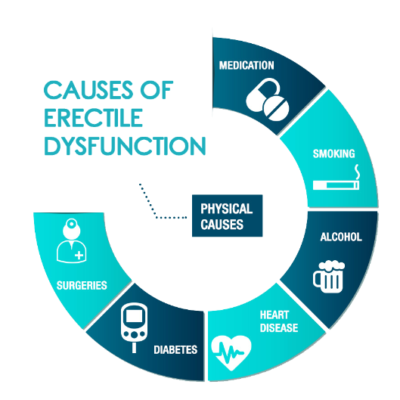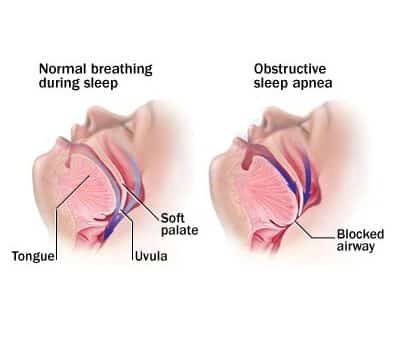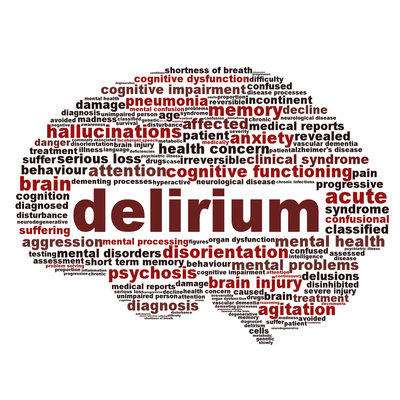
Article Topic: Anorexia Nervosa
Author: Ala’ Moh’d Al Barbarawi
Editor: Ihda Mahmoud Bani Khalaf , Sadeen Eid
Reviewer: Omar Sanduka
Keywords: Psychiatry, Mental Illness, Eating disorders, Anorexia Nervosa.
Overview
Anorexia Nervosa is a serious mental disorder that can affect individuals of all ages, races, and genders. (1) It primarily affects young women in adolescence and can continue into adulthood. (2) Individuals suffering from this disorder have an intense fear of weight gain and a disturbed body image, which drives severe dietary restrictions or other abnormal weight loss behaviors such as purging or excessive physical activity. (1,4-6)
Definition
Anorexia nervosa is defined as the restriction of energy intake relative to body requirements, which leads to significantly low body weight that is not contributable to organic causes. Individuals with this illness also display an intense fear of gaining weight and have behaviors that interfere with weight gain. (4)
Epidemiology
According to the DSM 5, the 12-month prevalence among young females is around 0.4% (4) while the lifetime prevalence in women is 2-4%. (7-9) The female-to-male ratio is 10:1, although there are fewer studies on anorexia nervosa in males. (4) This disorder is most seen in the age group between 10 to 25 years. (10)
Comorbidity
Possible comorbidities include bipolar, depressive, and anxiety disorders. Obsessive-compulsive disorder (OCD) is described in patients with the restricting subtype of anorexia nervosa. On the other hand, in the binge-eating/purging subtype, alcohol and other substance use disorders may be comorbid. (4)
Suicide Risk
The suicide rate is reported to be 12 per 100,000 per year. Patients with anorexia nervosa should be evaluated for suicide-related ideation and behaviors as well as other risk factors for suicide, including a history of suicide attempt(s). (4)
Pathogenesis
Several factors contribute to the etiology of Anorexia Nervosa.
Genetic Factors
Studies show a strong familial correlation and heritability. Three Genome-Wide Association Studies (11) (GWAS) have been published where multiple gene mutations were found. In the Duncan et al. study, the genome-wide significant finding showed a mutation in the ERBB3 gene. (12)
Neurobiological Factors
- Neurocognition and Social Cognition
There are multiple neurocognitive markers for this mental illness including difficulties switching between different tasks or task demands (13) and poor central coherence (i.e., a preference for local, “detail-focused” over global, “bigger picture” processing). (14) Evidence suggests that the stage, duration, and severity of the illness affect the performance of the individual. (15) Affected people also suffer in socio-emotional processing, showing attentional biases, impaired emotion recognition, regulation and expressivity, and poor theory of mind. (16)
- Structural Neuroimaging
Patients have been reported to have global reductions in grey and white matter, increased cerebrospinal fluid, and decreased grey matter in the left hypothalamus, reward-related regions of the basal ganglia, and the somatosensory cortex. (14). Studies done on recovered patients before and after treatment suggest that brain tissue abnormalities may recover with weight regain. (17,18)
Developmental factors
Developmental risk factors include adverse prenatal and neonatal events, such as dysmaturity or prematurity, (19,20) as well as feeding and sleeping difficulties in infancy. (20) Other risk factors include personality traits associated with anxiety, depression, perfectionism, and autism spectrum. (20) The hormonal changes and dysregulations that occur during puberty and adolescence represent the period of the first onset of anorexia nervosa. (21)
Environmental factors
Females are at higher risk for anorexia nervosa. (20) The illness is increasing in low-income and middle-income countries, which may be due to cultural transitions associated with industrialization, urbanization, and globalization. (8) Another risk factor is body dissatisfaction which is linked to the development of any eating disorder. (22) Despite the worldwide sociocultural pressures to be thin, the incidence of anorexia nervosa in women is relatively low. (23)
DSM-5 Diagnostic Criteria(4)
- Restriction of energy intake relative to requirements leads to significantly low body weight in the context of age, sex, developmental trajectory, and physical health. Significantly low weight is defined as a weight that is less than minimally normal or, for children and adolescents, less than minimally expected.
- Intense fear of gaining weight or of becoming fat, or persistent behavior that interferes with weight gain, even though at a significantly low weight.
- Disturbance in the way in which one’s body weight or shape is experienced, undue influence of body weight or shape on self-evaluation, or persistent lack of recognition of the seriousness of the current low body weight.
Coding note
The ICD-9-CM code for anorexia nervosa is 307.1, which is assigned regardless of the subtype. The ICD-10-CM code depends on the subtype:
- (F50.01) Restricting type: During the last 3 months, the individual has not engaged in recurrent episodes of binge eating or purging behavior (i.e., self-induced vomiting or the misuse of laxatives, diuretics, or enemas). This subtype describes presentations in which weight loss is accomplished primarily through dieting, fasting, and/or excessive exercise.
- (F50.02) Binge-eating/purging type: During the last 3 months, the individual has engaged in recurrent episodes of binge eating or purging behavior (i.e., self-induced vomiting or the misuse of laxatives, diuretics, or enemas).
Specify if:
- In partial remission: After full criteria for anorexia nervosa were previously met, Criterion A (low body weight) has not been met for a sustained period, but either Criterion B (intense fear of gaining weight or becoming fat or behavior that interferes with weight gain) or Criterion C (disturbances in self-perception of weight and shape) is still met.
- In full remission: After full criteria for anorexia nervosa were previously met, none of the criteria have been met for a sustained period of time.
Specify current severity
The minimum level of severity is based, for adults, on the current body mass index (BMI) (see below) or, for children and adolescents, on the BMI percentile. The ranges below are derived from World Health Organization categories for thinness in adults; for children and adolescents, corresponding BMI percentiles should be used. The level of severity may be increased to reflect clinical symptoms, the degree of functional disability, and the need for supervision.
- Mild: BMI ≥ 17 kg/m2
- Moderate: BMI 16–16.99 kg/m2
- Severe: BMI 15–15.99 kg/m2
- Extreme: BMI < 15 kg/m2
Diagnostic Markers (4)
- Hematology: Leukopenia with a decrease in all cell types, but usually with apparent lymphocytosis. Mild anemia and thrombocytosis, and rarely bleeding problems
- Serum chemistry: elevated blood urea nitrogen reflecting dehydration. Hypomagnesemia, hypozincemia, hypophosphatemia, and hyperamylasemia can be observed. Hyperchloremic, hypokalemic metabolic alkalosis can be caused by self-induced vomiting while mild metabolic acidosis is observed in laxative abuse.
- Endocrine: T3 levels are decreased, while T4 is in normal-low range. Low estrogen in females and low testosterone in males.
- ECG: Sinus bradycardia is common, and significant prolongation in QTc is seen in some patients.
- Bone mass: The risk of fracture is significantly elevated due to low bone mineral density.
- Resting energy expenditure: significant reduction.
- Physical signs and symptoms: caused by starvation. Amenorrhea is common which is a consequence of weight loss. In prepubertal females, menarche may be delayed. Other complaints include constipation, abdominal pain, cold intolerance, and lethargy. The most remarkable finding is emaciation. Hypotension, hypothermia, and bradycardia are commonly present. Salivary gland hypertrophy and dental enamel erosions can be caused by self-induced vomiting.
Treatment
There are multiple treatment modalities including behavioral, pharmacological, and nutritional treatments that can be implemented for adolescent and adult patients.
Behavioral treatments
- Family-based treatment (FBT) Family-based treatment – FBT is a three-phase treatment for adolescent patients and their families over 16 1-hour sessions and 9 months (initially of 10h during 6 months).
- First phase: therapy is focused on attempts to absolve the parents from the responsibility of causing the disorder and complimenting them on the positive aspects of their parenting.
- Second phase: parents were helped to transition eating and weight control back to the adolescent in an age-appropriate manner.
- Third phase: focused on establishing a healthy relationship between the adolescent and the parents. 24 1-h sessions were provided over the 1 year. (24)
- Specialist supportive clinical management (SSCM): this modality combines clinical management (i.e., giving information, advice, and encouragement) with a supportive therapy designed to build a positive therapeutic relationship and to influence change. The content includes assessment, identification, and regular review of target symptoms; psychoeducation; monitoring of physical status; establishing a goal weight range; and nutritional education and advice. (25)
- Maudsley model of anorexia treatment for adults (MANTRA) This treatment is based on cognitive-interpersonal treatment. It proposes that these four broad factors are central to the maintenance of anorexia nervosa(26):
- A thinking style characterized by inflexibility, excessive attention to detail, and fear of making mistakes, (27)
- Socio-emotional impairment (e.g., avoidance of emotional experience, regulation, and expression)
- Positive beliefs on how the mental disorder helps the person in their life.
- Unhelpful reactions of close others (e.g., overinvolvement, criticism, accommodation to symptoms).
These aspects are targeted in treatment, to improve weight, the eating disorder and other symptoms, and psychosocial adjustment. The treatment style is motivational. (26)
- Enhanced cognitive behavior therapy (CBT-E): this is a personalized approach for eating disorders consisting of four stages. Stage one is focused on gaining a mutual understanding of the person’s eating problem and helping him or her modify and stabilize their pattern of eating. In stage two, progress is systematically reviewed, and plans are made for the main treatment. Stage three focuses on the processes that are maintaining the person’s eating problem (e.g., addressing concerns about shape and eating). In stage four, the emphasis shifts to the future. (28)
- Focal psychodynamic psychotherapy (FPT): At the beginning of this treatment, the therapist identifies psychodynamic relevant foci using a standardized psychodynamic diagnostic interview (OPD-II). It is divided into three treatment phases. Phase one focuses mainly on pro-anorectic behavior, ego-syntonic beliefs (attitudes and behavior viewed as acceptable), and self-esteem. Phase two focuses on relevant relationships and the association between interpersonal relationships and eating (anorectic) behavior. The last phase consists of the transfer to everyday life, treatment termination, and parting. The patient’s weight is assessed and documented before every treatment session. (29)
Pharmacological Treatment
According to systematic reviews, antidepressants neither improve weight gain nor reduce eating disorders. (31) Other drugs that are currently under investigation include tumor necrosis factor, dronabinol (a cannabinoid receptor agonist), and ghrelin agonists to promote appetite. (32)
Nutritional Treatment
Dieticians are an important part of a multidisciplinary treatment team. Admission or a day-patient eating disorder unit is indicated in patients who are underweight and malnourished. (33) They should receive a combined program of supervised refeeding and anorexia nervosa-related psychotherapy. Primarily, it is essential to accurately assess nutritional and fluid intake and to document premorbid weight and the course of weight loss. Recommended weight gain rates range from 500 g to 1400 g per week depending on the duration of weight loss and malnutrition, the age of the patient, somatic comorbidity, and the severity of purging behavior. (34,35)
Particularly in the early stages of refeeding, a serious and potentially fatal medical complication is a refeeding syndrome. The highest-risk patients are those who have been malnourished and emaciated for a long time. Refeeding syndrome is a state of hypophosphatemia, hypomagnesemia, and hypokalemia. (35,36) According to the RANZP protocol (2014), adult patients should start with a refeeding of 6000 kJ/day, increased by 2000 kJ/day every 3 days, until an adequate intake to meet the person’s needs for weight restoration is reached. Moreover, electrolytes should be monitored regularly and this diet should be supplemented by 500mg phosphate twice daily and at least 100 mg daily thiamine for the first week, and thereafter as clinically indicated for people at high risk of refeeding syndrome. (37)
Osteoporosis prevention and treatment
Weight restoration is the most efficient strategy to improve bone density and, in women, menstrual function. Transdermal estrogen-replacement therapy only partially increases bone density in adolescents. (30)
Differential Diagnosis (4)
- Medical Conditions (e.g., gastrointestinal disease, hyperthyroidism, occult malignancies, and acquired immunodeficiency syndrome)
- Major Depressive Disorder
- Schizophrenia
- Substance Use Disorders
- Social Anxiety Disorder, OCD, body dysmorphic disorder
- Bulimia Nervosa
- Avoidant/Restrictive Food Intake Disorder
Conclusion
In conclusion, this article provides a broad overview of anorexia nervosa, and it emphasizes the significant roles of environmental, genetic, and developmental factors in contributing to the development of the disorder. There are many physiological consequences of anorexia nervosa, including hormonal imbalances, metabolic changes, and potential long-term health complications. Many treatment approaches have been discussed such as cognitive-behavioral therapy, nutritional counseling, and family-based interventions, which highlight the importance of a multidisciplinary approach to manage Anorexia Nervosa effectively.











